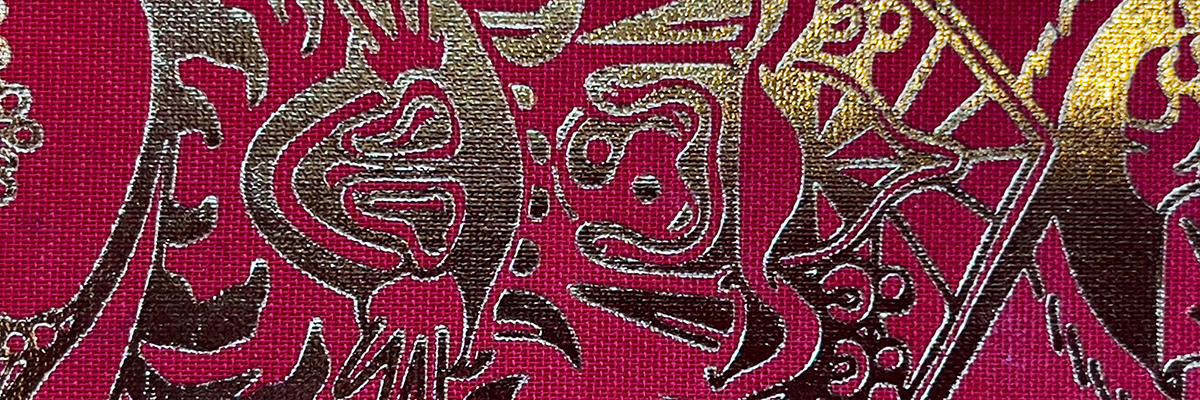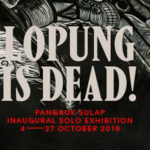Infinite Doors
2010 - Film & Video (Film & Video)
2:04 minutes
Takeshi Murata
If one had been guessing at Takeshi Murata’s criticism of American consumerist culture up until watching Infinite Doors , it would be solidified after hearing the announcer from The Price is Right squawk prizes one after the next. In the two minutes of the film’s runtime, can count the word “new” used twenty-eight times, and “car”—the holy grail of prizes on that show—used eight times. The bodacious women introduce free prizes, the doors slide open repeatedly, and the crowd cheers with an insatiable appetite in a clear signal of an American propensity for numbing overconsumption. (An unexpected moment of humor emerges when a Nazi enthusiast from the ending of Indiana Jones: Raiders of the Lost Ark melts on one of the new, free flat-screen TVs.) The artist talks about this work in relation to his experience as a “child of the ‘80s (mostly),” making him a prime target for that era’s commercial marketing on steroids. Murata says, “The ‘80s-era marketing is comical now, and easy to make look ridiculous. With Infinite Doors , I wanted to show my affinity for it, for better and worse, and understand how it shaped my aesthetic development. With the digital age, it’s harder to see the humor because it’s harder to see. It’s definitely heightened, or maybe honed is a better word. How else are Facebook and Google worth billions, right?”
Underlining the temporality of nostalgia, memory, and narratives crafted through cinematic pop culture, the American artist Takeshi Murata has constructed a body of animated works that explore the lifespan of moving images and their role in the shaping of shared cultural histories. Whether abstracting footage culled from 1980s blockbusters like Rambo into a vibrant slurry of sight and sound, or slowing down the introductory credit sequence of the 1970s sitcom Three’s Company to a cryptic melancholic pace, as well as reworking the melodramatic prize package revealing moments from the game show, The Price is Right , Murata employs a variety of animation processes to highlight the decay of media narratives. Utilizing these forms of cinema as material, Murata skillfully manipulates pop culture iconography, not for irony, celebration, or critique, but as a requiem for the mortality of the images of our time, a reminder of the impermanence of mass media and the fleeting lifespan of cultural significance.
Colors:
Related works sharing similar palette

© » BROOKLYN STREET ART
The Yok & Sheryo: “Yeahnahnesia” A Mystical Land and Guide | Brooklyn Street Art BROOKLYN STREET ART LOVES YOU MORE EVERY DAY In the realm where imagination dances with audacity, Yok & Sheryo, the dynamic duo hailing from the crossroads of New York, Australia, and Asia, have conjured up a whimsical masterpiece, aptly titled “Yeahnahnesia.” Published in collaboration with the Art Gallery Western Australia, this book is a memoir and fantasy of creativity and storytelling that makes a reader question the boundaries of reality and fiction...

© » TWOCOATSOFPAINT
Coherent divergence at John Molloy Gallery – Two Coats of Paint Carter Hodgkin, Dither 12, cut paper collage with acrylic paint, inkjet & protective varnish on canvas over panel, 24 x 24 inches Contributed by Jonathan Stevenson / “Mutability,” a thoughtfully conceived and curated group show at John Molloy Gallery, by its title contemplates the elastic aesthetic capacities of painting, drawing, and sculpture...

© » ARTS EQUATOR
Weekly Picks: Malaysia (1–7 October 2018) | ArtsEquator Thinking and Talking about Arts and Culture in Southeast Asia Weekly To Do October 1, 2018 Lopung Is Dead! – Pangrok Sulap’s Inaugural Solo Exhibition , at A+ Works of Art, 4–27 Oct Artist collective Pangrok Sulap’s first solo exhibition comprises recent and ongoing work...

© » ART AND CAKE
Art of the Joshua Tree – Art and Cake October 30, 2023 October 30, 2023 Author Art of the Joshua Tree Sossi Madzounian Deserts Ikebana , Photography Charity: Center for Biological Diversity Karin Lindeberg Frida, I see you under the shady tree , 35mm Photography 8×10 inches Charity: Center for Biological Diversity Chloe Allred, Dreaming in Cerulean and Quinacridone , Oil Paint on Canvas...

© » ART AND CAKE
In the Trenches: Artists Encounter the Los Angeles River, Part 1 – Art and Cake August 30, 2023 August 30, 2023 Author In the Trenches: Artists Encounter the Los Angeles River, Part 1 Michelle Robinson 2023 What Was 4th Street Acylic paint on print 40×60 in By Lawrence Gipe In the mid-1980’s, I lived on Santa Fe Avenue and 7th Street, and the idea of Los Angeles having a “river” was a bit of a joke...

© » ARTS EQUATOR
Migrant Ecologies Project: A Grain of Wheat Inside a Salt Water Crocodile | ArtsEquator Thinking and Talking about Arts and Culture in Southeast Asia Grain of Wheat July 8, 2019 Artist letters, clockwise from top left: Letters from Mari Keski Korsu, Marietta Radomska, Lee Weng Choy and Filippa Ramos...

© » KADIST
Nicolás Grum
2014El gran pacto de Chile (The Great Pact) and La balserita de Puerto Gala (The Raft) were part of the “Museo Futuro”, an exhibition in which the artist presented nine miniature dioramas staging fragments of Chile’s history, from its colonial invasions to the present...












